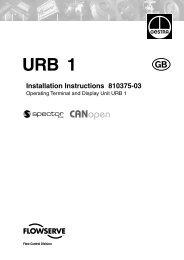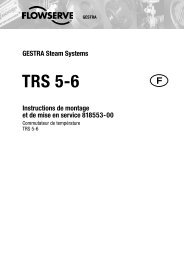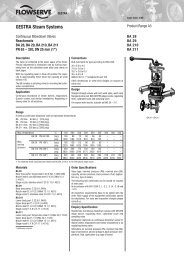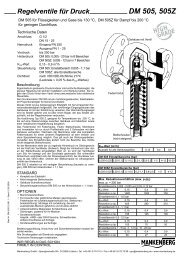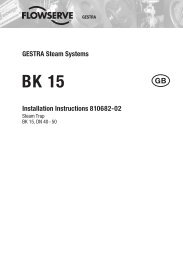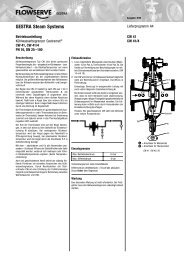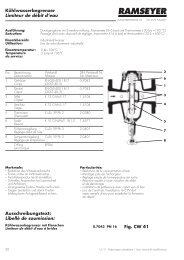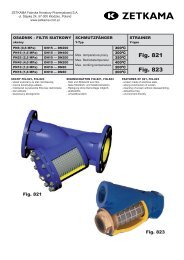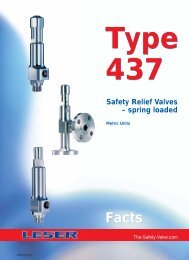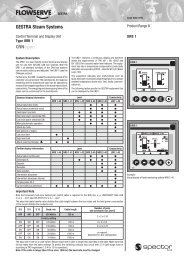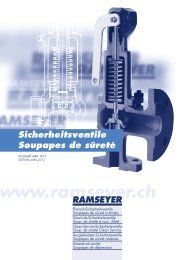NRS 2-40 - Flowserve Corporation
NRS 2-40 - Flowserve Corporation
NRS 2-40 - Flowserve Corporation
Create successful ePaper yourself
Turn your PDF publications into a flip-book with our unique Google optimized e-Paper software.
Malfunctions<br />
Danger<br />
The terminal strip of the <strong>NRS</strong> 2-<strong>40</strong> is live during operation.<br />
This presents the danger of electric shock.<br />
Cut off power supply before mounting or removing the equipment.<br />
Fault-finding list for troubleshooting<br />
Device fails to work – indication of malfunction<br />
Fault: In spite of correct wiring and commissioning of the equipment an<br />
interference signal is indicated.<br />
Remedy: The interference signal is caused by H. F. interferences coming from the<br />
installation. For interference suppression of the voltage supply we supply<br />
ferrite rings, stock code 147253. The 230 V supply lines should be looped<br />
through the ferrite ring five to ten times. If several controllers are used in<br />
the system, they can be fed from the interference suppressed<br />
supply lines. For the intererence suppression of the bus line we supply<br />
hinged-shell ferrite rings, stock code 147254. The hinged-shell ferrite<br />
rings are clamped onto the bus line close to the terminal strip of the<br />
controller.<br />
Restart system after installation.<br />
Device fails to work – no function<br />
Fault: LED “Power” does not light up.<br />
Remedy: Apply power. Connect the equipment properly, referring to wiring<br />
diagrams.<br />
Device does not work properly<br />
Fault: Incorrect function at analogue output. The following actual value indicator<br />
shows incorrect values.<br />
Remedy: Correct the switchpoint settings and the control range settings of the<br />
electrode.<br />
Fault: Switchpoints and actual value indication drift continuously towards 100 %.<br />
Remedy: Deposits have accumulated on the electrode rod. Remove the level<br />
electrode and clean the electrode rod.<br />
Fault: A high-level alarm is raised although the liquid level is below high level.<br />
Remedy: Deposits have accumulated on the electrode rod.<br />
Clean the electrode rod.<br />
Defective electrode insulation. Replace level electrode.<br />
Fault: Liquid level below switchpoint “LOW LEVEL”, device fails to switch.<br />
Remedy: Check installation of level electrode and vent hole in the protection tube.<br />
If an external measuring pot is used make sure to open the isolating<br />
valves.<br />
25



